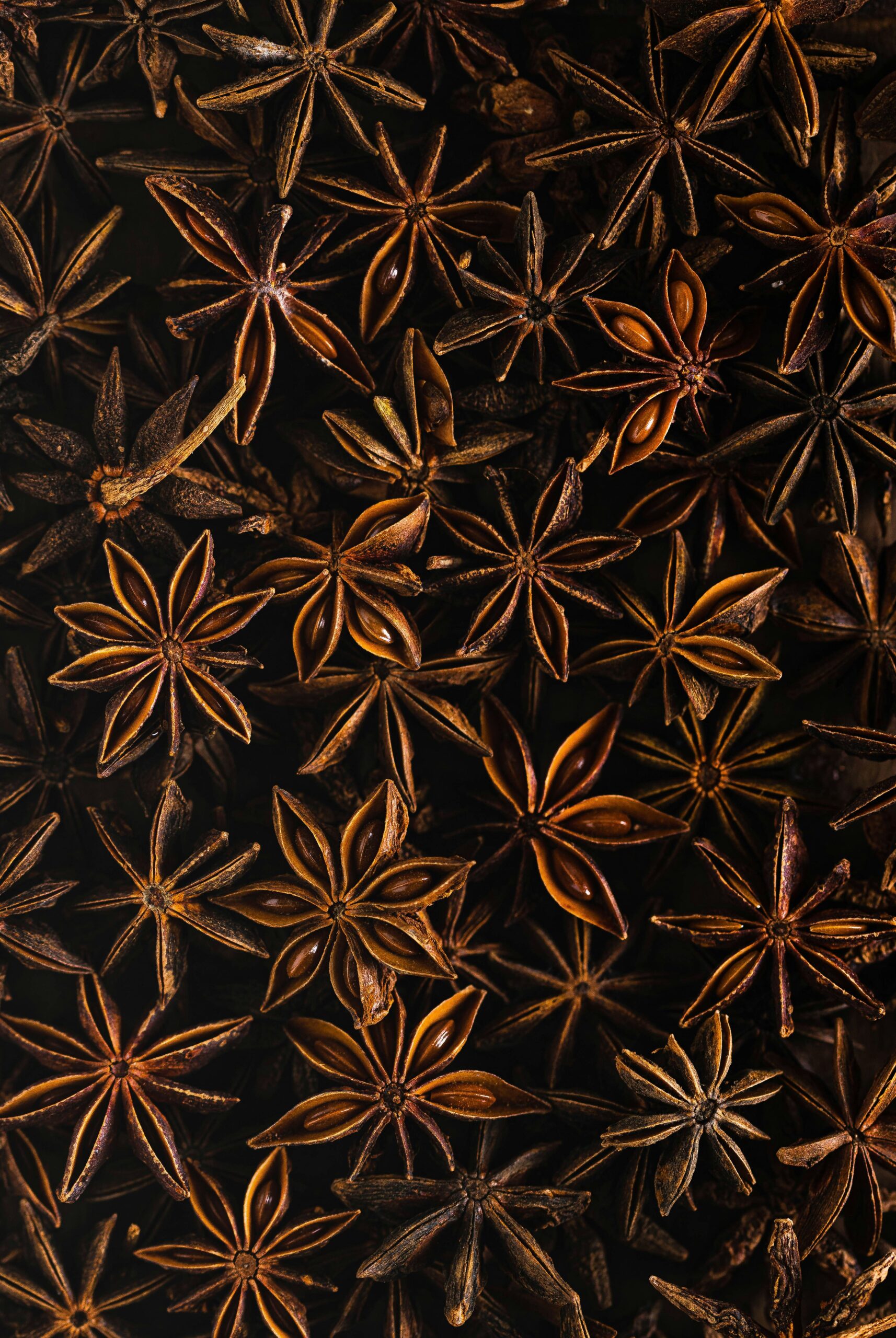Star anise is a distinctive spice with an intense licorice-like aroma, widely used in Asian, Middle Eastern, and Western cuisines. Its eight-pointed star shape and deep brown pods make it visually striking, while its sweet-spicy flavor enhances both savory dishes and desserts. As a key ingredient in Chinese five-spice powder, Vietnamese pho, and mulled wine, star anise plays an essential role in global culinary traditions. But what makes star anise so unique, and how can you use it in cooking?
Origin and cultivation of star anise
Star anise comes from the Illicium verum tree, a member of the Schisandraceae family. Native to China and Vietnam, it thrives in warm, humid climates and is also cultivated in India and Japan.
The spice is harvested from the tree’s immature green fruits, which are then sun-dried until they develop their characteristic woody texture and reddish-brown color. Rich in essential oils, star anise is prized for both its culinary uses and its role in traditional spice blends.
What does star anise taste like?
Star anise has a bold, sweet-spicy flavor reminiscent of licorice, with warm, earthy undertones. It contains anethole, the same aromatic compound found in fennel and anise seeds, giving it a characteristic sweetness with a peppery depth.
Flavor nuances:
- Sweet and slightly spicy
- Intense licorice-like aroma
- Deep, warm undertones
- Enhances both sweet and savory dishes
Star anise substitutes – what can you use instead?
If you don’t have star anise on hand, consider these alternatives:
- Anise seeds: Milder but share a similar licorice-like sweetness.
- Fennel seeds: Less intense, but offer a warm and herbal touch.
- Cloves + cinnamon: Together, they mimic star anise’s warmth and spice.
- Chinese five-spice powder: A blend that already contains star anise along with other complementary flavors.
Difference between star anise and anise seeds
Though often mistaken for one another, star anise and anise seeds come from different plants and have distinct flavors. Star anise, from the Illicium verum tree, has a bold, spicy-sweet licorice taste, while anise seeds, from the Pimpinella anisum plant, offer a milder, herbal sweetness. Star anise is much stronger and is used sparingly in slow-cooked dishes, spice blends, and beverages, whereas anise seeds are more common in baked goods and herbal teas, adding a gentler licorice note.
How to use star anise in cooking
Star anise is a staple in Asian cuisine, adding depth and complexity to a variety of dishes.
In savory dishes:
- Broths and soups: A key ingredient in Vietnamese pho and Chinese braised dishes.
- Slow-cooked meats: Enhances the flavors of pork belly, duck, and beef stews.
- Rice and sauces: Adds complexity to soy-based sauces and aromatic rice dishes.
In sweet dishes and beverages:
- Baking: Found in spiced cakes, cookies, and fruit desserts.
- Hot drinks: Used in mulled wine, chai, and herbal infusions.
- Infused syrups: Provides warmth to cocktails, jams, and dessert sauces.
- Vietnamese Pho: A rich, fragrant broth infused with star anise and other spices
- Chinese Red-Braised Pork: A slow-cooked dish with soy sauce, ginger, and star anise
- Mulled Wine: A warm, spiced drink with star anise, cinnamon, and citrus
Cooking tips:
- ✔ Use whole pods for infusions and remove them before serving.
- ✔ A small amount adds a lot of flavor—too much can be overpowering.
- ✔ Store in an airtight container away from heat and moisture for freshness.
Where to buy star anise
Star anise is available in whole and ground form at most grocery stores, spice markets, and online retailers. For the best quality, look for:
- Deep brown, intact pods with a strong licorice aroma.
- A woody texture and unbroken star shape—cracked or faded pods may be lower in essential oils.
- Whole pods instead of ground star anise, as ground versions lose their potency more quickly.
Why star anise deserves a place in your kitchen
Star anise’s sweet-spicy warmth and intense fragrance make it a versatile spice for both sweet and savory dishes. Whether enhancing slow-cooked meats, infusing rich broths, or adding depth to baked goods and drinks, this spice delivers bold, unmistakable flavor. Proper storage helps retain its aroma and strength for extended use.


